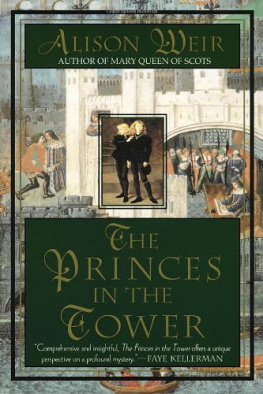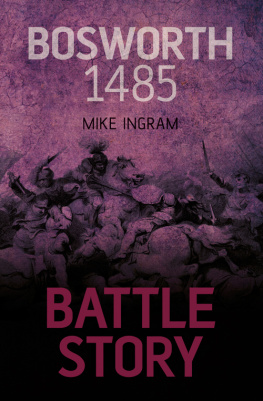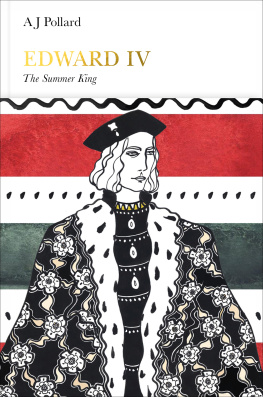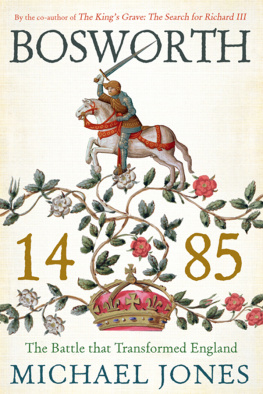King Richard III. From a picture in the National Portrait GalleryKing Richard III.
From a picture in the National Portrait Gallery
RICHARD III: HIS LIFE & CHARACTER
REVIEWED IN THE LIGHT OF RECENT RESEARCH
BY SIR CLEMENTS E. MARKHAM, K.C.B.
AUTHOR OF 'THE LIFE OF THE
GREAT LORD FAIRFAX' AND
'THE FIGHTING VERES'
WITH A PORTRAIT
LONDON: SMITH, ELDER, AND CO.
15 WATERLOO PLACE. 1906
(All rights reserved)
PREFACE
There are periods of history when the greatest caution is called for in accepting statements put forward by a dominant faction. Very early in my life I came to the conclusion that the period which witnessed the change of dynasties from Plantagenet to Tudor was one of these. The caricature of the last Plantagenet King was too grotesque, and too grossly opposed to his character derived from official records. The stories were an outrage on common-sense. I studied the subject at intervals for many years, and in the course of my researches I found that I more or less shared my doubts with every author of repute who had studied the subject for the last three centuries, except Hume and Lingard. My own conclusions are that Richard III. must be acquitted on all the counts of the indictment. The present work is divided into two parts, the first narrating the events of his life and times, and the second examining the various accusations against him. I did not contemplate publication because I thought that in these days prejudices were too strong to make it possible that a fair and candid hearing should be given to the arguments. But I determined to consult some historical friends, and I was pleased to find that to a great extent I was mistaken.
In the first place, I wrote a full abstract of my arguments, for publication in the 'Historical Review,' acting under the advice of my old schoolfellow, Professor Freeman, to whom I sent it in the first instance. It so happened that Mr. Freeman had given attention to part of the subject. He upset some odious fabrications of the chroniclers affecting the character of Margaret of Anjou, by proving that she was in Scotland at the time when the battle of Wakefield was fought. Freeman seldom wrote on so late a period of our history, and we owe this modern excursion to a visit to Mr. Milnes Gaskell at Thornes.
After reading what I sent him, Professor Freeman wrote on August 13, 1890: 'Your abstract has set me a-thinking. It is only a Robert of Bellme who does that kind of thing. On your main point I will talk to Gardiner and Stubbs. Meanwhile, I have shown your manuscript to Sidney Owen, who read it and held it to be what lawyers would call considerable. Owen had been at those times, and holds Henry VII. to be at least capable of it.
'It would be a self-denying ordinance in Gairdner if he accepted your view, for he has gone more straight at that time than anybody else. Gardiner has written to him, and he is a little fierce, as was to be expected, but if you are like me, no man's fierceness will hinder you from dining and sleeping as well as usual. The matter is at all events worth discussing.'
Professor York Powell read my manuscript, and wrote: 'I have read the manuscript and think there is something worth looking into. Henry's conduct to Tyrrell is exceedingly suspicious. Either Richard or Henry might have put the boys to death, but it would be interesting for many reasons to know which it was. I am not convinced by Markham, but I do not think Gairdner has the right to be cocksure. The Morton suggestive idea is very ingenious and pretty, and quite probable. It has interested me much to read Markham's letter, for I remember my difficulties in the matter and the point I got to, that the great men did not, for a time, hold the now vulgate view of the murder of the princes. I should rejoice should Markham light upon additional evidence in favour of his thesis, which priori is by no means unlikely. There is something about Richard's character, ability, and reign which, I think, attracts every real student of history, and gives one a feeling that he has been unfairly dealt with.'
In 1891, the abstract of my work was published in the 'Historical Review,' and Bishop Creighton, who was then the editor, wrote: 'Thank you for your paper, which I have read with great interest. It certainly makes out a strong case.'
There were two rejoinders from Mr. Gairdner, which enabled me to recast and improve parts of my work by the light of his criticism.
I lost my adviser, Mr. Freeman, in 1892. One of the last things he did was to warn me of an objection taken by Miss Edith Thompson, which enabled me to meet it.[]
After careful revision I showed my manuscript to the late Sir Archibald Milman, who had given close attention to those times. On December 27, 1897, he wrote: 'It is your bounden duty to tell your story of Richard III., giving the date for every fact. It is only by sticking to dates that you get at truth in criminal causes, and the same method must be followed at the bar of history. It would be a pleasure to think that the last Plantagenet was not a cruel scoundrel. By giving dates and authorities for them, you render a great service. Richard's loyalty and able administration in the north seem inconsistent with such ferocity. I was much interested in one of your facts, that, according to the story put forward by Henry VII., the bodies of the little princes were taken up from the place of hasty interment and placed in consecrated ground. But lo! they remained under the staircase, where they were found in Charles II.'s reign.'
In consequence of Sir A. Milman's letter I made another close scrutiny of dates given by various authorities for the same events with important results. I also went very carefully over the ground of the battlefields of Wakefield, Towton, Barnet, Tewkesbury, and Bosworth; and I added some chapters to the work.
The correspondence to which I have referred has led me to the conclusion that students of history are not, as I once believed, unwilling to reconsider the questions which form the subject of the present work, when they are presented from new points of view; and that the well-known arguments which were supposed to suffice for the defence of the Tudor stories in the past are in these days insufficient. The numerous points now raised and submitted for the judgment of students are at all events worth discussing. The present work is about as complete as very frequent revision can make it.
[] She pointed out that the titles of Norfolk and Nottingham, granted by Edward IV. to his second son Richard, were given by Richard III. to Lords Howard and Berkeley, and that, therefore, young Richard must have been dead. The answer is that the grants to Lords Howard and Berkeley were made on June 28, 1483, before it was even pretended that young Richard had been murdered.
CONTENTS
PAGE
PREFACE..........................
PART I
CHAPTER I
BIRTH AND CHILDHOOD
Description of Fotheringhay...............
CHAPTER II
DEATH OF RICHARD'S FATHER AND BROTHER AT THE BATTLE OF WAKEFIELD
The Duke of York declared Heir-Apparent.........
CHAPTER III
THE CROWNING VICTORY OF TOWTON
Description of Edward IV.................
CHAPTER IV
THE CROWN LOST AND WON--BATTLE OF BARNET
Return of George and Richard from Holland........
CHAPTER V
MARGARET OF ANJOU AND HER SON EDWARD










